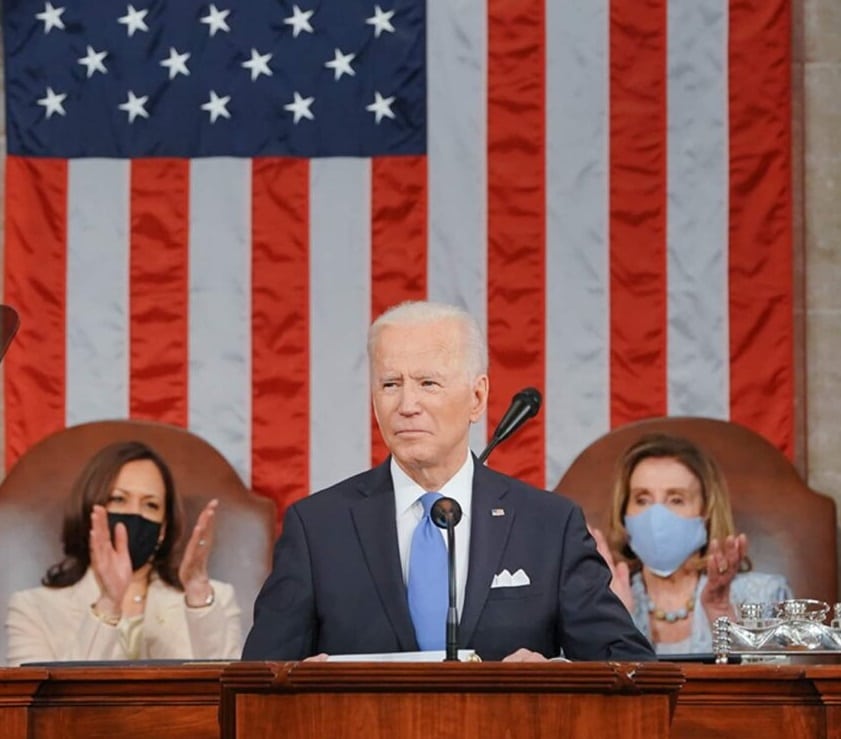On April 28, 2021, President Joe Biden presented his American Families Plan to a joint session of Congress. In his speech, the President introduced his administration’s initiatives to “rebuild the middle class and invest in America’s future.” In order to pay for the programs included in this ambitious agenda, President Biden has also released the Made in America Tax Plan.
This proposed plan includes numerous tax changes which, for the most part, constitute significant tax increases to wealthier Americans. The resulting revenue expected from these tax increases have already been earmarked to pay for the proposed reforms slated to enhance education, childcare, parental and sick leave and other governmental social programs. The cost of the programs within the American Families Plan is $1.8 trillion.
It should be noted that this bill is separate and apart from a previously proposed spending bill, the American Jobs Plan, which is aimed to fund $2.3 trillion of infrastructure improvements. This final bill is still being drafted by the President’s tax writers, but is expected soon. The cost of these initiatives is anticipated to be funded by increases in the corporate income tax.
Proposed Tax Increases for Individuals
The primary tax increases included in the Made in America Tax Plan include an increase in the highest individual income tax rates as well as a “doubling” of the preferential capital gains tax rate.
Under the proposed plan, the individual income tax rate increase will move that rate from the current level of 37% to 39.6%, which was the highest rate prior to the enactment of President Trump’s Tax Cuts and Jobs Act enacted in December, 2017. The rate increase would directly affect those individual taxpayers earning more than $523,000 per year, or joint filers earning more than $628,000 per year.
The proposed capital gains tax rate increase, already a proposal subject to great debate, would move the rate from the current level of 20% to 39.6%. This increase would be applicable to taxpayers with $1 million or more in income. Thus, taxpayers finding themselves subject to this tax increase will realize a 98% increase in the current rate.
To illustrate the impact by way of example, a taxpayer with an investment gain of $100,000 and total income of $1 million would pay $39,600 federal income tax on this gain under the proposal – versus $20,000 under current law. This total does not include the 3.8% net investment income tax enacted under the Obama administration to fund the Affordable Care Act. Further, the total does not include state income tax on the capital gains. Taking that state tax into account, Pennsylvania taxpayers subject to the increase would see a total capital gains rate of 46.47%, or almost half of the gain realized. In high-tax-rate states such as New York, the rate will be more than half, with rates on capital gains moving beyond 52%!
At this time, it is difficult to determine if the proposed legislation will be enacted as drafted. There is a faction within the President’s party arguing for a repeal of the state and local tax (SALT) deduction limitation imposed by the Tax Cuts and Jobs Act. Most of the “noise” concerning this issue is coming from politicos representing high-tax-rate states such as New York, New Jersey and California, where the lack of that deduction works to raise overall tax rates for their constituents. These individuals are currently threatening to slow any tax bill’s progress.
Points to Consider
To be sure, taxpayers have seen rates at these levels in the past. In the late 1970s and early 1980s, the highest tax on investment income was 70%, and the 1986 Tax Reform Act championed a matching of the capital gains rate and the “ordinary” income rate at the same 28% level. However, a change of this magnitude has not been part of the U.S. tax regime for many decades. It will be interesting to see exactly what the increase might mean in future investment and the overall markets.
The total price of three recently proposed bills (the American Rescue Plan Act, the COVID relief and stimulus packages passed in March 2021; the American Families Plan and the pending infrastructure bill, the American Jobs Plan) is a whopping $6 trillion. Adding this number to the $2.2 trillion cost of the Coronavirus Aid, Relief, and Economic Security Act passed in March 2020, and the Consolidated Appropriations Act, 2021, enacted in December 2020, at a cost of $900 billion for COVID-19 pandemic relief and an additional $1.4 trillion omnibus spending bill for 2021, brings the potential balance of governmental spending in approximately 15 months to an incredible total of $10.6 trillion dollars!
The annual gross domestic product (pre-COVID-19) for 2019 was just double that amount at $21.7 trillion according to the Bureau of Economic Analysis.
The Federal Reserve Bank of St. Louis reports that in fiscal year 2019, (October 1, 2018 through September 30, 2019), the federal government collected $3.5 trillion in revenue. Thus, recent spending bills invoked by both political parties utilized three times the funds collected in fiscal year 2019.
As is generally the case with all legislation introduced on either side of the aisle, little consideration is given to the total cost of these packages. While all proposals carry good intent, it remains to be seen if the effects of the various stimulus and economic packages already passed and yet to be introduced will produce the results intended.
As always, Grossman Yanak & Ford LLP will stay abreast of these changes and communicate the information necessary to keep our friends contacts and clients fully informed. In the meantime, should you have specific questions relating to this legislation or any tax matter, please contact Bob Grossman or Don Johnston at 412-338-9300.






